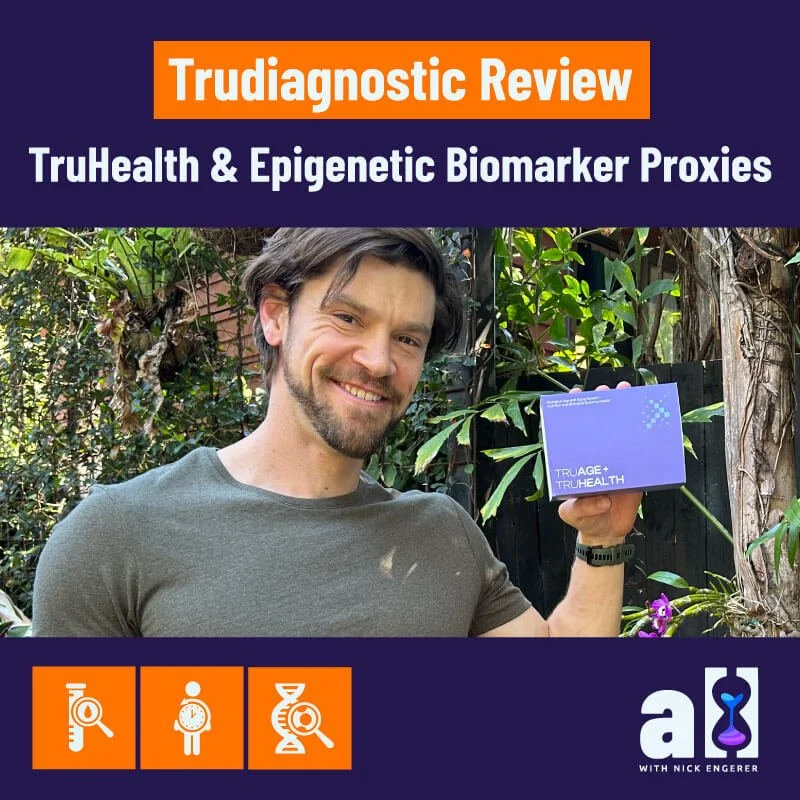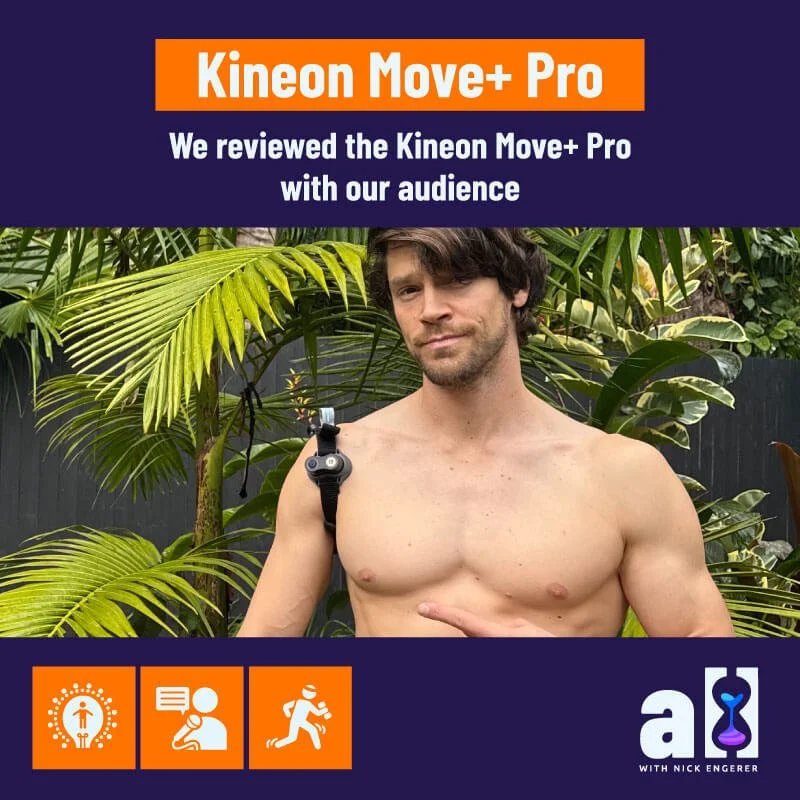Chronomics - Biological age, DNA Methylation, Methylation clocks
One for now… One for later! Testing my epigenetic age with Chronomics.
Biological age - DNA Methylation, Methylation clocks
In my previous post on biological age, I introduced you to three free online tools for estimating your biological age.
And while these tools are quite useful, they hardly represent the state of the art in biological age assessment.
To really sample biological age directly, we need to leverage the advent of methylation clocks, which track changes in methyl groups in the epigenome.
The epigenome is the system that controls how our genome is expressed. It’s an incredibly intricate system that goes so far as to actually program your stem cells on what type of cell they should become (e.g. blood cell vs. skin cell).
And while the expression of the genome by the epigenome works excellently when we are young, it is known to change as we age in detrimental ways. This makes managing, delaying or even reversing this age-related process of methylation a key pillar of any longevity strategy.
Quantification of biological age
My biological age is 22 years old. I’m 34. How are you doing? Learn how to estimate your biological age with a simple blood test.
This naturally leads us to the nature of quantifying (ie measuring) the amount and intensity of age-related DNA methylation which has occurred in one’s body to date.
This process is occurring as an unfortunate byproduct of your metabolism continually, but is also strongly modulated by environmental factors.
Alcohol, smoking (cigarettes), toxin exposure, stress and environmental pollutants all play a role in DNA methylation, and the science of connecting the dots as to why a given methylation pattern exists in a particular area of the genome is emerging rapidly.
In my view, there are two important capabilities emerging in the biological age testing space which utilise DNA methylation to estimate one’s biological age.
Emerging capability #1 - Test your biological age at home
The first is the ability to leverage a consumer testing kit to measure your DNA methylation. At my last count, I found six reputable companies who are offering a test which will provide you a biological age estimate through the methylation clock (i.e. Horvath).
They have a wide range of price points, utilise different technologies (blood vs saliva), and fit into a company’s offering in different ways.
A Longer Life will be covering as many of these test kits as it can… if we can keep up! This space is moving quite fast, and it will be our aim to help you make informed choices.
Emerging capability #2 - Determine what aged you
The second capability is harder to find, but in my view is far more valuable as I expect it to provide actionable insights (a key theme of this blog).
This is the newly emerging capability to not just quantify the biological age, but to qualify it. By this I mean, to analyse the biological age and make attributions as to why one has aged.
In my review of the technology in this space, there is only one company who can provide us with this level of detail to date - and that is UK based Chronomics.
In an upcoming post, I’ll be interviewing CSO Dani Martín Herranz to dive a bit deeper into the how and the why beyond their incredible capability in this space. For now, let’s play biohacker guinea pig…
Testing Chronomics testing me
Chronomics is not a direct to consumer testing service, and in most cases one has to work with their partnership network in order to access their testing kits.
However, after hearing CEO Tom Stubbs interviewed at the Biohacker Summit in 2019, I knew I had to reach out and find a way to work together. Through our collaboration, A Longer Life purchased two testing kits from Chronomics.
We will be using these test kits to not only review the company, process and results (sharing them with you of course!), but also to run a unique type of biological age experiment on yours truly (more on this in an upcoming post - be sure to subscribe not to miss it).
The Chronomics testing process involves a saliva sample - very generous volume I might add, which is provided in a test tube with stabilisation medium so that the sample can survive the long trip back to the UK.
From this sample, we’ll be given access to an online dashboard of 35+ different health metrics of which biological age is only part of the ‘health picture’ which will be represented there.
It is my expectation that the specific insights I gain from this process will highlight areas of my DNA methylation that might be ‘reversed’ (a not so subtle hint on what I plan to do with the 2x kits 🤔?)
Chronomics and biological age: Some basics
As a part of our collaboration, I completed a personalised walk-through of their dashboard, I was able to ask a number of preliminary questions about the process, the science and what to expect in my results. Here’s what I asked, and what I found:
ALL: Alright, give me some numbers, how much of my genome are we going to analyse?
Chronomics: We’ll be analysing more than 20 million positions in your epigenome using next-generation sequencing, the most comprehensive epigenetic snapshot to date. We’ll also be able to run a community inter-comparison across 1000s of other samples (all anonymous of course).
ALL: Rad. Now what will it tell me about my biological age - can I get a number?
Chronomics: Yes, we’ll use those over 20 million positions in your DNA to give you a biological age estimate. We’ll also give you some insights on your age trajectory versus a supercentarian
ALL: Love it. But what value will that information provide me. Age is just a number, after all. I need actionable insights.
Chronomics: We’ll use this analysis, along with a detailed personal survey to identify what lifestyle changes you could make to have the biggest impact on your epigenetic age. These include metabolic status, alcohol consumption and cigarette smoking.
ALL: Uh oh. I was the guy known for building a two-story beer bong in graduate school. Perhaps that will finally catch up with me. Tell me a bit more about how this works?
Chronomics: It is a cumulative exposure measure, and was built through our internal research team of data scientists, engineers and academic partners. There is actually a specific methylation signature that occurs in the epigenome from this exposure overtime.
ALL: Did I also mention I once built a wizard staff of 21 beer cans? Let’s move on… What about cigarette smoking. I’ve enjoyed my fair share of ‘party cigarettes’ and smoky bars - what will your test reveal?
Chronomics: Cigarettes contain certain toxins and heavy metals which are now known to methylate the genome in unique ways. Repeat exposure to chemicals known to be contained in tobacco will damage your DNA and we’ll be able to measure that.
ALL: * Chuckles nervously *
Chronomics and A Longer Life - What’s next?
In upcoming posts, I’ll interview the team at Chronomics in more detail, review my personalised results and discuss my plans for making the insights actionable.
 |
FDA & TGA DISCLAIMER
This information is intended for educational purposes only and is not meant to substitute for medical care or to prescribe treatment for any specific health condition. These blog posts are not intended to diagnose, treat, cure or prevent any disease, and only may become actionable through consultation with a medical professional.














